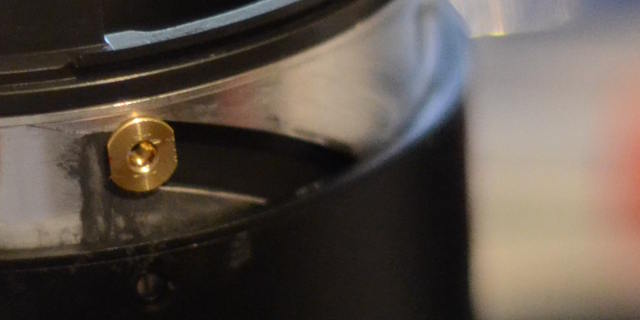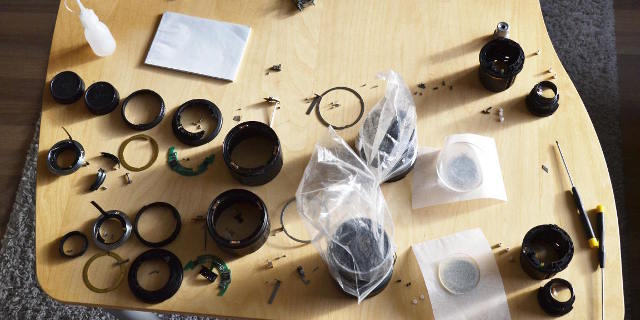
|
The Tamron 28-105mm F2.8 is special lens, it's 3.75x zoom factor at a constant F2.8 is the highest ever made for a DSLR. I was excited to have this one but the excitement was soon gone: the seller didn't mention the lens was worn out. The zoom mechanism has quite some play and the sagging of the lens caused huge coma. Only at about F7 the lens was sharp, more than 2 stops in. The coating of the front lens element also has seen better days, incorrect cleaning made a lot of small scratches. This only affect the contrast and would have been tolerable. A pretty expensive bummer as the seller basically admitted scamming me by stating the lens was in good condition beforehand (I explicitly asked about the condition of the lens) and afterwards saying "well that's the risk of buying second hand" and that I shouldn't nag about it. |

|

|
A closer lookThe sagging of the lens caused a huge coma. This sagging is caused by wornout zoom tracks in the different sleeves the slide over eachother and by wornout pins that connect the sleeves with eachother. 
One of the pins that connect the sleevesThis is one of those pins The brass part has a plastic o-ring that slides through the track that is visible. This part of the lens has a metal track which wasn't worn out badly, mostly the pin. The crucial track that caries the whole weight of the lens however was made of plastic. It was worn out by 0.2mm which is desastrous for keeping the lens elements aligned. |

|

|
The complete teardownI have few images of the process but this image is taken halfway. Both lenses are taken apart completely and layed out parallel. The assembly goes in reverse but crosses over at 2 location. The rear lens element is kept, the zoom mechanism with all the sleeves is swapped and the zoom ring, electronics and mount pieces are kept. 
An aweful lot of small parts makes this a 3D jigsaw.The internal elements of the lens are shielded from dust by plastic bags. Once assembled any internal dust would require again a full teardown to be removed. |

|